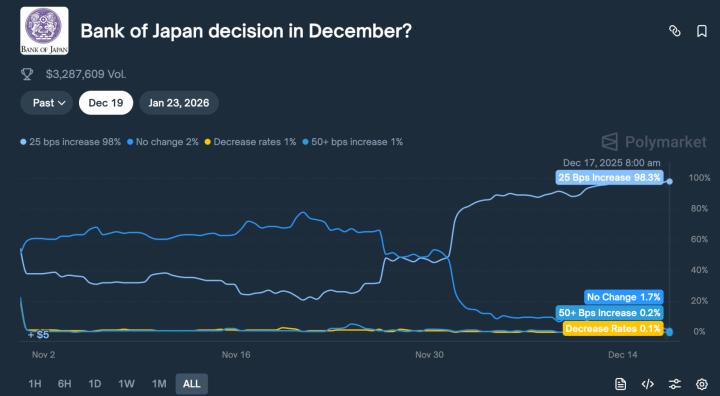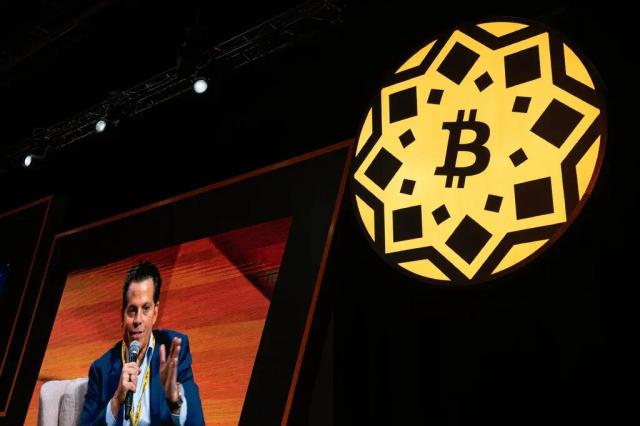Written by: Vader Research
Compilation: Deep Tide TechFlow

Value accumulation is a crucial but often overlooked topic in Web3. In this article, we will dig into how the value generated within the Yuga ecosystem is distributed to different stakeholders (Yuga Labs, $APE, BAYC, MAYC, etc.).
1. Capital structure and enterprise value
In a Web2 enterprise, the capital structure usually consists of equity and various levels of debt. Senior creditors typically hold higher collateral security but charge lower interest rates, while junior creditors hold less security collateral but charge higher interest rates.
Enterprise value is like a company's price tag. It tells us how much the company is worth in total, including money it owes to others (such as banks) and money that belongs to the owners (such as shareholders).
Enterprise Value = Equity Value + Debt Value

Creditors and minority shareholders have legal rights to the earnings and assets of the business. In contrast, NFT and token owners do not enjoy such protections. Nevertheless, by including tokens and NFTs issued by Web3 companies as part of the overall capital structure, we can enhance the design and structure of value accretion.
Applying the same logic, the value of the Yuga ecosystem is equal to the value of the entire Yuga world. It is the sum of the funds owned by the Yuga Labs equity entity and the value of all existing NFT collectibles (BAYC, MAYC, etc.) and tokens ($APE).
Yuga Ecosystem Value = Yuga Labs Equity Value + Yuga NFT and Token Value

2. Intrinsic value
Intrinsic value is the future value of an asset, which we can estimate based on future profitability. But because future money is not as valuable as current money, we discount future earnings.
Therefore, the fundamental value of a company, token or NFT is equal to the discounted value of its future earnings. Using the same logic, the value of the Yuga ecosystem is also equal to the discounted value of its future earnings.
Yuga Ecosystem Value = Discounted Future Earnings
3. What is the business model of YUGA?
How does the Yuga ecology generate income? Let's take a look at the basic revenue streams of the Yuga ecosystem.
Yuga has two main revenue streams:
- NFT and Token Sale → Create and sell new tokens and NFT collectibles;
- NFT Royalty → A certain fee is charged for each secondary NFT transaction.

4. The dark side of issuing new NFTs: dilution
The Yuga ecosystem has gained significant revenue streams through the creation and sale of new collections of NFTs such as BAYC, MAYC, and Otherdeeds. Yuga Labs raised $100 million from the first sale of MAYC and $330 million from the first sale of Otherdeeds, while holding over $2 billion in Ape Coin and $40 million in Otherdeeds on its balance sheet.
However, releasing a new collection of NFTs also has its downside: it dilutes the ownership of existing Yuga ecosystem shareholders (Yuga Labs, APE, BAYC). For existing Yuga ecosystem shareholders to benefit from dilution, the cost of dilution needs to be offset by the value created by issuing and selling new collections of NFTs.
The idea is similar to the concept of mergers and acquisitions (M&As), where an acquiring company acquires a target company through a share exchange. As a result, shareholders of the acquiring company will experience dilution. The success of an acquisition depends on whether the value created by the target company exceeds the cost of dilution. If the value created is greater, the acquisition is considered successful; otherwise, it is considered a failure.
5. BAYC Sales | May 2021
When Yuga Labs issued and sold 10K BAYCs for $200 each, they created a new stakeholder group called BAYC holders, which received $2M from the first sale.
It should be noted that the NFTs sold by PFP projects and Web3 game studios are not only virtual goods, people buy them with the expectation that their value will increase over time.
This is why BAYC owners are considered an independent stakeholder group in the Yuga ecosystem, as the issuing company has responsibilities to these NFT owners.

In the months following the sale, BAYC's price rose significantly, reaching $66,000 by the end of August.
This means that BAYC's market value could be as high as $660 million, and if we assume a 1:1 conversion ratio between BAYC's market cap and Yuga Labs' equity entity valuation, Yuga Labs would also be valued at ~$660 million.

The analysis of the above Machinations chart is as follows:
- Yuga Labs sold 10,000 BAYC for $2 million in funding.
- In 4 months, the price of BAYC rose from $200 to $66,000.
- In the 4th month, Yuga Labs has earned $2.5 million through BAYC royalty income.
6. MAYC Sales | August 2021
Next, let's analyze the distribution and sales of MAYC. Before the launch of MAYC, BAYC had a market capitalization of approximately $660 million, and the entire ecosystem consisted of only BAYC holders and Yuga Labs, owned by the four founders.

Additionally, a total of 20,000 MAYC NFTs were created, 10,000 of which were sold to the public and another 10,000 were distributed to BAYC holders. This means that Yuga Labs and BAYC each receive 50% of the proceeds from the MAYC offering.
Unlike other PFP NFT series, BAYC holders can claim future Yuga NFTs for free. This sends a clear message to BAYC holders that they have a vital place in the Yuga ecosystem.

Yuga Labs managed to sell 10,000 MAYC NFTs at $10,000 each, earning $10 million. The 10,000 MAYC NFTs given away to BAYC holders are theoretically worth $10 million at the end of the MAYC sale.
At the time of MAYC's release, there were a few concerns that could affect it. First, there is uncertainty about whether Yuga Labs will be able to sell all 10k MAYC NFTs. Second, there are concerns that selling new collectibles (MAYC) will erode value from BAYC, with BAYC NFT prices dropping due to increased competition.
However, despite these concerns, the MAYC sale was a huge success for Yuga Labs, generating $10 million in revenue and paving the way for future NFT products.

Let's analyze the Machinations diagram above:
- Yuga Labs sold 10,000 MAYC for $100 million.
- The price of MAYC went from $10,000 to $58,000 in 7 months.
- By the seventh month, Yuga Labs generated $25 million in royalties through MAYC.
In the weeks leading up to ApeCoin's launch, BAYC traded for as much as $2.2 billion, while MAYC traded for $1.1 billion. Yuga launched a new collection of NFTs, creating huge new value, attracting well-funded late-stage crypto venture investors.
Yuga, led by a16z, has raised a staggering $450 million seed round at a $4.5 billion valuation, which will be made public a few weeks after ApeCoin launches. If we do not consider the 1:1 NFT market capitalization and equity rules, but adopt the seed round valuation, the value accumulation structure will be as follows.

7. $APE Published | March 2022
The launch of ApeCoin in March 2022 is an important event in the Yuga ecosystem and has received high attention from the NFT community. Yuga Labs has had several successful launches in the blockchain space, so many are eagerly anticipating the launch of ApeCoin and hoping that it will live up to the high standards set by Yuga Labs.

The initial token distribution is designed to allocate 47% of tokens to the ecosystem, 15% to Yuga Labs, 1% to charity, 8% to founders, 14% to venture capital, and 15% to BAYC and MAYC holders.
Our definition of stakeholders in the Yuga ecosystem (Yuga Labs, BAYC, MAYC, VCs) allocated a total of 52% of the tokens in tokens. Let's see how the 52% is distributed:

While the aforementioned figures provide some insight, they do not fully reflect the reality. It should be noted that Yuga Labs venture investors and founders also have a fundamental interest in Yuga Labs, which means that they indirectly receive more tokens than the aforementioned figures. Therefore, further analysis of these figures is necessary to obtain a more accurate distribution of tokens.

Assuming no employees or advisors have any ownership in Yuga Labs, and we also exclude potential equity dilution from the Larva Labs (CryptoPunks IP) acquisition. Based on a $450 million seed round, it looks like Yuga Labs founders own 89 percent of the company, while Yuga Labs venture capital owns the remaining 11 percent. When we add up the numbers, this means Yuga Labs founders have a token allocation of 41% and Yuga Labs ventures have a token allocation of 30%.

Since the distribution method of $APE Coin is very different from MAYC, the distribution method of $APE Coin is more inclined to shareholders of Yuga Labs than to holders of BAYC and MAYC.
Our calculations show that Yuga Labs and its shareholders received 71% of the quota, while BAYC/MAYC holders received only 29%. This equates to a 2.4:1 ratio, which is higher than the 1:1 ratio allocated by MAYC. Therefore, the founders of a16z and Yuga Labs sacrificed BAYC and MAYC holders while getting more $APE Coin distribution.

It is worth noting that tokens allocated to BAYC and MAYC holders are immediately usable, while tokens allocated to Yuga Labs, VCs and founders are subject to a 4-year unlock period.
8. OTHERDEEDS OFFERING | MAY 2022

In the days leading up to the Otherdeeds sale, Bored Ape Yacht Club (BAYC), Mutant Ape Yacht Club (MAYC) and $APE tokens were all trading at all-time highs.
BAYC has a staggering ~$4B market cap, MAYC has reached ~$2B, and the $APE token has a market cap of $6.5B. Yuga Labs managed to turn 10,000 monkey JPEGs without any utility into a multi-billion dollar empire in less than two years!
It is worth noting that the market value of NFT collectibles is calculated based on the reserve price multiplied by the circulating supply, so if someone wants to buy all the circulating Yuga ecosystem assets at once, the actual valuation may be much lower.

Of the total 100,000 Otherdeeds issued, 55,000 are for public sale, 10,000 are given away to BAYC, 20,000 are given away to MAYC, and 15,000 are reserved by Yuga Labs.
Overall, 70% of Otherdeeds went to Yuga Labs. We saw another situation where Yuga Labs acquired the assets of NFT and $APE token holders at exorbitant prices. In addition, MAYC holders received too much distribution at the expense of BAYC holders, while $APE holders did not receive any Otherdeeds distribution.

Let's break it down:
- Yuga Labs sold 55,000 Otherdeeds NFTs for $310 million. The $310 million purchasing power was used to purchase the Otherdeeds NFT, but Yuga Labs promised not to touch the proceeds of $APE within a year. Therefore, the current value of the $APE proceeds from Yuga's Otherdeeds sale is approximately $80 million.
- The price of Otherdeeds fell from $31,000 to $2,000 in seven months.
- Yuga Labs has generated $56 million in Otherdeeds royalties in its 7th month.
While we said earlier that APE holders do not receive any distribution of Otherdeeds, it is important to note that the main sale is made using $APE. However, using APE as a medium of exchange for buying Otherdeeds assets at auction does not necessarily give $APE value or make it a sustainable aggregation point.
Only if $16,000,000 of $APE is deposited into the vault of the $APE DAO by Otherdeeds buyers, the value will be permanently accumulated on $APE. If so, the excess $APE held in the vault will be subject to a collective vote by the APE governance team on how to utilize it - as it will remain on the balance sheet of the APE DAO.

In this hypothetical graph, we can observe several events taking place. Every month, 5 million APE tokens enter circulation through scheduled token unlocking and staking rewards. Additionally, we can see 1,000 APE tokens being transferred back to the $APE reserve each month through the sale of Sewer Pass IAPs in Yuga's mobile game (we'll discuss this shortly).
As more tokens accumulate in the reserve, the value of $APE should theoretically increase. However, if instead of accumulating tokens in a vault, they are staked, this will only delay the inevitable - Yuga Labs selling their own allocation of tokens.

Regarding the sale of Otherdeeds, it should be noted that the $APE paid by the purchaser goes directly into Yuga Labs' wallet, not into the APE DAO's vault. This means that Yuga Labs has full control over these tokens and can sell them at any time and distribute the proceeds to its shareholders. However, Yuga Labs has committed not to sell the $APE tokens received from the Otherdeeds sale for a year.
In effect, Yuga Labs somehow locked up the $APE tokens for a year, but they will likely sell some of them at the end of the year. This caused $APE tokens to become a scarce resource within a year, but in fact, the tokens obtained from the Otherdeeds sale are still under the control of Yuga Labs.
In this hypothetical chart, we demonstrate a scenario where, with Yuga Labs regularly selling $5M of $APE, the proceeds from the Otherdeeds sale only temporarily slowed the selling pressure on $APE.
9. SEWER PASS LAUNCHED | JANUARY 2023
Before the launch of Sewer Pass, Yuga’s asset value fell as the entire cryptocurrency market fell. Specifically, the value of the Yuga ecosystem dropped from $17 billion in May 2022 to $3.8 billion in January 2023.

Let us now analyze the structure of the Sewer Pass issuance.

Below is the capital structure of the Yuga ecosystem as of March 2023:
- Yuga Labs: owns NFTs, games and other assets
- Bored Ape Yacht Club (BAYC): Hold Sewer Pass NFT
- Mutant Ape Yacht Club (MAYC): hold Sewer Pass NFT
- APE DAO: owns APE tokens and Otherdeeds NFT, controlled by APE token holders
Among them, Sewer Pass NFT is considered as a channel connecting BAYC and MAYC communities with Yuga Labs. However, since Yuga Labs itself does not hold Sewer Pass NFTs, the value of this NFT collection is not included in Yuga Labs' total assets. At the same time, although in-game microtransactions can be purchased using APE tokens, the size of the benefits is negligible compared to Sewer Pass NFT.

10. Benefits of YUGA Ecosystem
The table shows Yuga Labs, BAYC, and MAYC's revenue from issuing and selling Yuga NFTs and tokens. While BAYC and MAYC holders appear to earn more, at $1.3 billion and $572 million, respectively, Yuga Labs earned $412 million, excluding tokens and NFTs held in its reserves. Notably, Yuga Labs holds $2 billion in $APE Coin in its reserves.

Royalty has become an important source of income for NFT projects, although its viability is being challenged by ongoing competition in the NFT market.
Yuga Labs charges 2.5% for BAYC and MAYC, while they charge 5% for Otherdeeds and Sewer Passes. It is worth noting that all earned royalties go to Yuga Labs and are not distributed to other stakeholders in the Yuga ecosystem. As a result, Yuga Labs has accrued $182 million in revenue from royalties.

The royalties are much smaller compared to master sales. As we previously thought, master sales are a better mechanism for monetizing intellectual property. However, royalties can act as a supplemental income stream, providing an additional source of income.
11. Stakeholder Questions

One of the biggest challenges when dealing with multiple holders is the inconsistency of interests. In the absence of laws or predetermined smart contracts dictating who is entitled to what, each holder may strive to maximize their short-term gains. At some point, internal conflict may arise between multiple stakeholders as each tries to ascribe value to their assets.
To avoid this from happening, Yuga Labs must be responsible for managing multiple stakeholders, managing stakeholders in a relatively fair manner when structuring new issuances and creating new revenue channels. A well-designed structure should aim to maximize collaboration among all stakeholders and minimize instances of misalignment of interests.
think:
- Assuming Yuga launches a new collection tomorrow, how will the company distribute that collection to its stakeholders?
- What value or utility does a Sewer Pass have if Sewer Pass holders do not receive any airdrops? Why would anyone continue to hold their Sewer Pass? Why won't they sell it? This question also applies to Otherdeeds.
- What percentage of game/metaverse revenue will be shared with Yuga stakeholders? Won't BAYC/MAYC holders receive any stake from game proceeds?
- What would be the distribution if the game proceeds were only distributed to $APE and Otherdeeds holders? 50/50? 80/20? Will the allocation be based on the most recent market price or the main sale price?
Let's consider this from the perspective of a retail investor. If someone wants to invest in the Yuga ecosystem, which asset should he buy?
This question is very important because each asset provides a different income channel for investors to obtain benefits in the Yuga ecosystem. It would be very disappointing to investors if Yuga performed well in the future, but the assets they purchased underperformed compared to other Yuga assets.
There is a compelling value proposition for buying BAYC and MAYC. By owning these assets, investors can earn a percentage of each new Yuga NFT or token issuance. Even though Yuga sometimes distributes smaller rewards to BAYC and MAYC holders, they still get a percentage of the issuance.
If you believe that Yuga's future NFT and token collections will have value, then BAYC or MAYC are the assets to buy. However, you will not receive Yuga royalty benefits. The minimum capital required to purchase these assets is relatively high, as BAYC and MAYC have floor prices of over US$110,000 and US$20,000, respectively.

$APE Coin offers a different value proposition. Currently, $APE provides vague and superficial "empowerment" that does not explain how the Yuga ecosystem enables $APE to accumulate benefits. While buying Otherdeeds with $APE provides temporary value, this only postpones the inevitable. Once $APE token holders realize that the value created from the Yuga ecosystem will not accrue to $APE, there is no reason for them not to sell it.
Using $APE for in-game microtransactions is a clearer utility (assuming proceeds go to the $APE DAO's coffers). We might see more $APE empowerments in Yuga's game/metaverse. However, Yuga has yet to announce the availability of existing assets. It would actually be wise for them to delay this announcement as it would lead to more speculation and anticipation among asset holders.
This means that failure to deliver on promises could lead to dissatisfaction among asset holders. Even if Yuga develops a great IP, game, or metaverse, if BAYC holders or Yuga Labs get more out of it than $APE or Otherdeed holders, those holders will be unhappy.
12. Summary
Value accumulation structures are a challenging topic in the Web3 world. Every set of NFTs or tokens issued by a project becomes a liability on the project's Web3 capital structure. To ensure that all stakeholders are aligned and collaborate effectively, projects need to have a well-designed structure for accumulating value.
If you are an investor, it is important to conduct thorough due diligence to fully understand the revenue and value pipeline you will be facing. When you make a mistake in selecting assets, even if you make the right decisions about which projects and teams to invest in, you can be very disappointed.
In short, a well-structured value accumulation model is critical to the success of a Web3 project, and investors should take the time to fully understand the assets they are investing in to avoid disappointment later.








